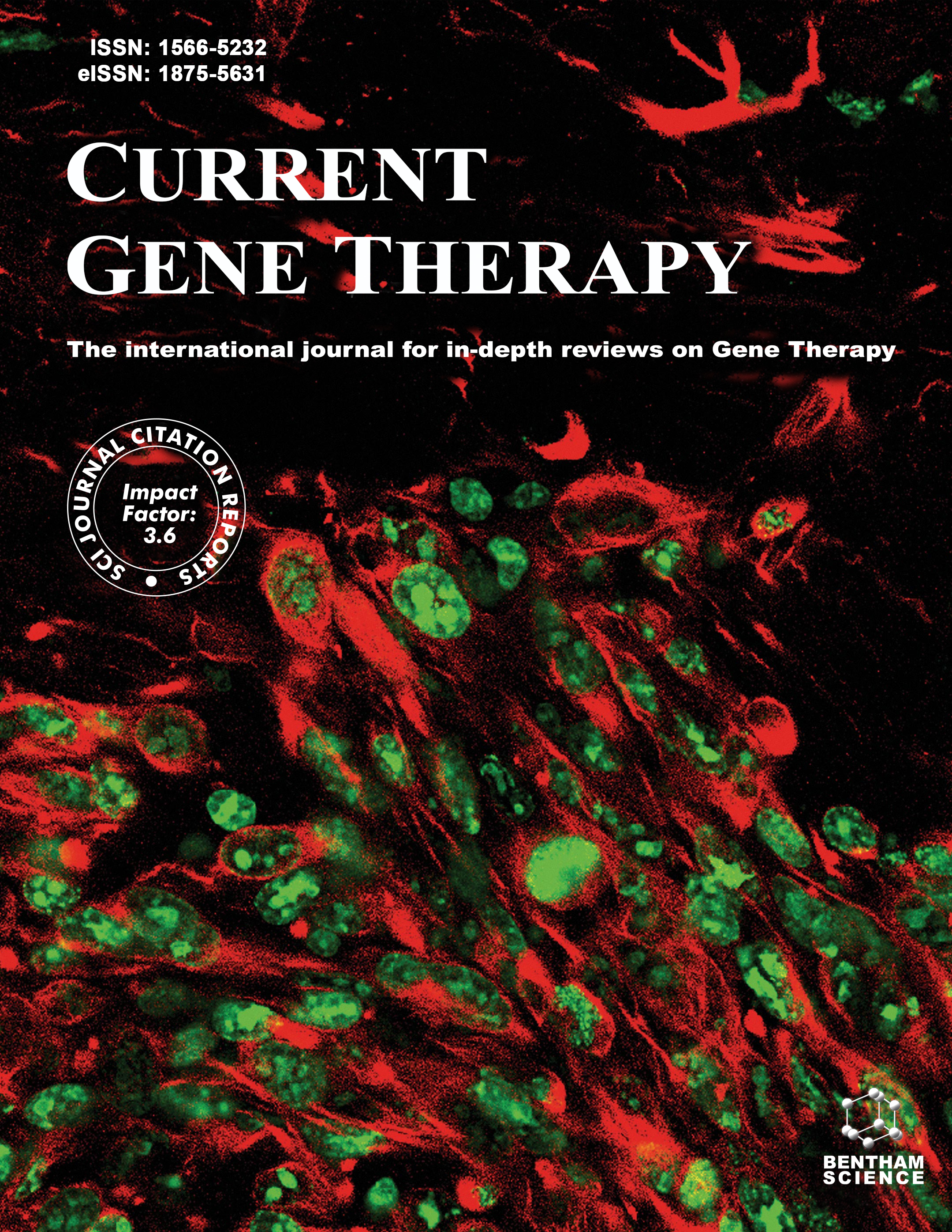- Home
- A-Z Publications
- Current Gene Therapy
- Previous Issues
- Volume 23, Issue 2, 2023
Current Gene Therapy - Volume 23, Issue 2, 2023
Volume 23, Issue 2, 2023
-
-
Characteristics of BAY 2599023 in the Current Treatment Landscape of Hemophilia A Gene Therapy
More LessHemophilia A, a single gene disorder leading to deficient Factor VIII (FVIII), is a suitable candidate for gene therapy. The aspiration is for single administration of a genetic therapy that would allow the production of endogenous FVIII sufficient to restore hemostasis and other biological processes. This would potentially result in reliable protection from bleeding and its associated physical and emotional impacts. Gene the Read More
-
-
-
Role of Long Non-Coding RNA in Regulating ER Stress Response to the Progression of Diabetic Complications
More LessChronic hyperglycemia damages the nerves and blood vessels, culminating in other vascular complications. Such complications enhance cytokine, oxidative and endoplasmic reticulum (ER) stress. ER is the primary organelle where proteins are synthesised and attains confirmatory changes before its site of destination. Perturbation of ER homeostasis activates signaling sensors within its lumen, the unfolded protein response Read More
-
-
-
Gene Therapy Cargoes Based on Viral Vector Delivery
More LessViral vectors have been proven useful in a broad spectrum of gene therapy applications due to their possibility to accommodate foreign genetic material for both local and systemic delivery. The wide range of viral vectors has enabled gene therapy applications for both acute and chronic diseases. Cancer gene therapy has been addressed by the delivery of viral vectors expressing anti-tumor, toxic, and suicide genes for th Read More
-
-
-
Current Landscape and Emerging Opportunities of Gene Therapy with Non-viral Episomal Vectors
More LessAuthors: Safir U. Khan, Munir Ullah Khan, Muhammad Imran Khan, Fadia Kalsoom and Aqeela ZahraGene therapy has proven to be extremely beneficial in the management of a wide range of genetic disorders for which there are currently no or few effective treatments. Gene transfer vectors are very significant in the field of gene therapy. It is possible to attach a non-viral attachment vector to the donor cell chromosome instead of integrating it, eliminating the negative consequences of both viral and integrated vector Read More
-
-
-
Amyotrophic Lateral Sclerosis Risk Genes and Suppressor
More LessAuthors: Rupesh Kumar, Zubbair Malik, Manisha Singh, R. Rachana, Shalini Mani, Kalaiarasan Ponnusamy and Shazia HaiderAmyotrophic lateral sclerosis (ALS) is a fatal neurodegenerative disease that leads to death by progressive paralysis and respiratory failure within 2-4 years of onset. About 90-95% of ALS cases are sporadic (sALS), and 5-10% are inherited through family (fALS). Though the mechanisms of the disease are still poorly understood, so far, approximately 40 genes have been reported as ALS causative genes. The mutations in some Read More
-
Volumes & issues
-
Volume 25 (2025)
-
Volume 24 (2024)
-
Volume 23 (2023)
-
Volume 22 (2022)
-
Volume 21 (2021)
-
Volume 20 (2020)
-
Volume 19 (2019)
-
Volume 18 (2018)
-
Volume 17 (2017)
-
Volume 16 (2016)
-
Volume 15 (2015)
-
Volume 14 (2014)
-
Volume 13 (2013)
-
Volume 12 (2012)
-
Volume 11 (2011)
-
Volume 10 (2010)
-
Volume 9 (2009)
-
Volume 8 (2008)
-
Volume 7 (2007)
-
Volume 6 (2006)
-
Volume 5 (2005)
-
Volume 4 (2004)
-
Volume 3 (2003)
-
Volume 2 (2002)
-
Volume 1 (2001)
Most Read This Month
Article
content/journals/cgt
Journal
10
5
false
en

Most Cited Most Cited RSS feed
-
-
New Hope for Intervertebral Disc Degeneration: Bone Marrow Mesenchymal Stem Cells and Exosomes Derived from Bone Marrow Mesenchymal Stem Cell Transplantation
Authors: Xiao-bo Zhang, Xiang-yi Chen, Jin Qi, Hai-yu Zhou, Xiao-bing Zhao, Yi-cun Hu, Rui-hao Zhang, De-chen Yu, Xi-dan Gao, Ke-ping Wang and Lin Ma
-
- More Less

